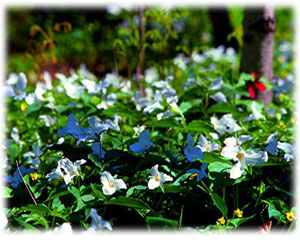
Anyone who has seen our native wildflowers in bloom in the woods in spring knows how magnificent a woodland wildflower garden can be. And most any homeowner with shade can duplicate that natural showcase. Basically, a successful woodland garden will have bloom from four groups of plants. So before you begin, look around or do some research and know which are native to your area. They’ll be your best bets.
A. Shade-loving native shrubs such as azaleas, rhododendrons, mountain laurel, and others.
B. Flowering native trees that thrive in your area, such as dogwood, redbud, shadbush, and others.
C. Wildflowers native to the forest floor, such as violets, trilliums, cardinal flower, hepatica, bloodroot, and scores of others.
D. Native woodland ferns. These are the natural companions for all our woodland wildflowers, and species such as American maidenhair, lady fern and others add elegance and beauty to any good woodland garden.

How to Begin. Finding the right site for your woodland garden will, of course, depend on your property. The first requirement is shade, but that’s not the whole story. Most of these plants enjoy moist conditions year round, in what is usually called “wet woodland”, but there are exceptions. Also, for a woodland garden, your soil type is critical. Some of these plants demand certain soil conditions, and you must supply them. A little work at the beginning, being sure you have enough moisture, and finding out if you soil is acid or alkaline, will pay big dividends for years once your garden is planted.
Rule No. 1: Let nature be your guide. Woodland gardening is like no other kind of gardening. It’s nothing like creating a vegetable garden, or even creating a border or bed of perennial flowers. With these more traditional gardens, you can pretty much dictate the location, make a few adjustments, and begin.
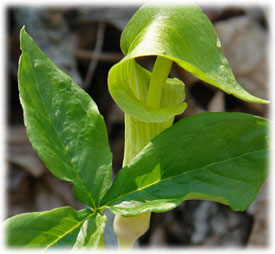
In the case of woodland gardening, it’s all important to work with nature, not against it. Start with a plan to enhance an area that’s already attractive, an area that nature has chosen for rich growth and good conditions. In extreme cases, you may have to create such an area, but usually if you have a shady area, there’s a spot there that is a natural garden spot. It’s easily accessible and maybe there are attractive rocks. Maybe some water. At the very least, the growing plants in the spot are already healthy and thriving. That’s the spot you should choose as the centerpiece of your woodland garden.
Your soil is very important. It tells you which plants to choose. Unlike most other plants, these beauties are not all totally adaptable. For example, a White Trillium in very acid soil under some pine trees cannot survive. Likewise, Trailing Arbutus cannot survive without soil that’s heavily acid. So for woodland wildflowers, testing your soil for acidity/alkalinity before you begin is absolutely necessary. You can buy a soil test kit at any garden center, and if you need help, your local Extension Service always has an expert ready to help you, free of charge.
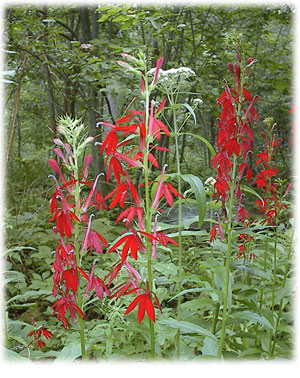
Sound complicated? It really isn’t. There are large groups of these plants that enjoy various soil types. You just have to know your soil type, and then proceed with that plant group--plants that should thrive in your soil. Yes, you can change the acidity level of your soil somewhat, but to begin, it’s recommended you go with what you’ve got. Once your garden is established, you may want to artificially create certain other soil-type areas with varying acidity/alkalinity, since that will give you a wider choice of plants.
If you’re creating an area that hasn’t been woods for awhile, remember, the plants you’re about to put in absolutely require “woodsy soil.” That means decades of leaf mold, and usually plenty of decomposed branches, etc. If your area does not have this sort of soil, you can help it by adding peat moss, but it may be well worth your while to import some woods soil. Perhaps from another spot on the property, or from a friend’s property. A few bushels of rich woods soil will pay big dividends.
Some wildflowers are famous for being picky about soil acidity/alkalinity: Woodland Wildflowers fall into several categories when it comes to soil type. Unlike many un-demanding meadow wildflowers such as daisies and black-eyed susans, some woodland flowers are much less adaptable when it come to soil. Once you’ve tested the soil where you’ll be planting them, you’ll know which wildflowers to choose.
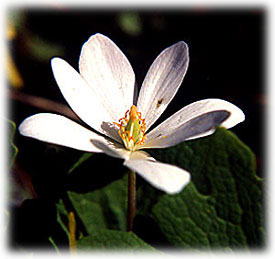
This does not apply to all the woodland flowers. Many are adaptable. For example, the Red Trillium doesn’t care if it’s in neutral/alkaline woods or a pine thicket that has heavily acid soil. It does equally well in both. But there are those that absolutely demand one or the other.
What does “Acid” or “Alkaline” soil mean? It’s simple. You’ve probably heard that all soil has a “pH.” That’s a measure of the amount of lime (or calcium) you have in your soil. Generally, moist climates have soils that tend toward acid, and dry climates are alkaline (limey). On the pH Scale (pH stands for potential hydrogen ions), soils with a pH higher than 7.0 are considered alkaline, and below that number are considered acid. Obviously soil with a rating of 7.0 is considered “neutral.”
Often, the pH of any soil is created or at least enhanced by the history of the land. Land that has been evergreen forest for centuries is almost always heavily acid. Conversely, land that contains lots of limestone is usually alkaline. If you live in a housing development, even an old one, you must know the earlier natural history of the land to estimate the land’s acid/alkaline history.
For example, most of the state of Vermont is somewhat acid, and the forest there is a mixture of evergreens and deciduous woods. The higher the elevation in the mountains, the more evergreens, and thus, the more acid the soil. Conversely, along the state’s west side which fronts the long shore of Lake Champlain, the soils are somewhat alkaline. This is because the last receding glacier exposed massive limestone deposits and cliffs along the lakeshore, creating an alkaline influence for that land.
The way these various soil types affect the natural occurrence of Vermont’s three common trilliums is a classic illustration. In fact, many trillium species, like lady slippers, are markers for various soils.
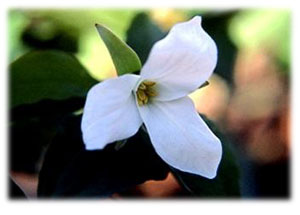
Red Trillium, T. erectum, occurs all over the state since it is adaptable as to soil type.
White Trillium, T. grandiflorum, prefers neutral to alkaline soil, so occurs in huge drifts along the Lake Champlain shore, but is rare throughout the rest of the state.
Painted Trillium, T. undulatum, absolutely demands acidic habitat, so is absent along the lakeshore, but is found throughout the rest of the state, and is quite common in high-elevation evergreen forests.
Land that is neutral or slightly alkaline, like the shores of Lake Champlain, is often called “calcareous woodland”, a reference to the calcium in the soils. Very acid soils are easy to spot since they are almost always heavy with evergreens and the ground often shows a thick blanket of decomposing pine needles. These woods are what wildflower enthusiasts often call “lady slipper land” since the most famous lady slippers are found there, and only there.
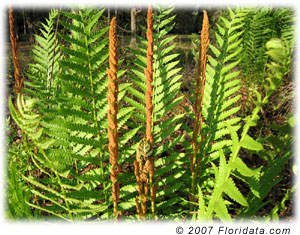
Wildflowers that demand high acidity. These woodlanders must have acid soil. In nature, that usually means pine woods or deciduous woodland with high oak population. That’s because pine needles and oak leaves create acidity in the soil as they decompose. Don’t even try the following flowers unless you have—or create—high acid.
Rhododendrons
Mountain Laurel
Pink Lady Slippers
Bluebead Lily (Clintonia borealis)
Trailing Arbutus (Epigaea repens)
Painted Trillium (T. undulatum)
Wildflowers that prefer neutral or alkaline soil. These flowers are less demanding, but will never do as well in acid soil as in neutral or alkaline woodland.
White Trillium (T. grandiflorum)
Downy Yellow Violet (Viola pubescens)
Canada Lily (Lilium canadense)
Choosing the site: water, old roots, pathways, and more. Here, let nature be your guide. Don’t try to create a whole new environment; again, go with what you have. Maybe there is a shaded spot at the back of your lawn. Maybe you have a rich woodland spot where there are already some wildflowers. All wooded areas have their prime spots, often a low spot, or beside a brook, or a slight hillside. Choose a spot where your wildflowers will show off well, and you and your friends and family can enjoy them. And most important, if you don’t have water in the woods (a pond or brook), be sure you can get your garden hose or sprinklers to the area for watering.
You’ll want to create or improve pathways through the garden, and maybe install a bench in a favorite spot. Maybe your project includes putting a pathway from the lawn into the trees to your garden spot. In any case, when you create pathways, top them with clean gravel, and if the soil is muddy, build it up so the path stays dry. If possible, make all pathways wide enough for two people to walk side by side.
If you have water, or at least a spot that is always very moist in spring, you’re in luck. This wet area can be a centerpiece spot for your woodland garden. Of course, if you have a brook or pond, that suggests certain flowers you’ll really enjoy. And you may want to create a pond in a low spot.
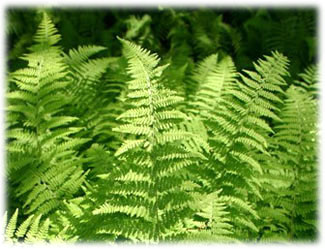
Most all woods have places that are wet or even flood in spring. If the water drains away by June or so, this may be a prime spot for many of your wildflower plants. Trillium, for example, love to grow on hillocks in very wet spaces. Water may be all around during spring, but the raised spots there, out of the actual water, make great sites for trilliums. Cardinal flower and irises like blue flag, conversely, will be very happy right in the wet spots. They’ll grow right in shallow brooks, and love other spots that stay muddy all summer.
Once you’ve chosen the site, there will probably be some plants there you’ll want to remove—unimportant young tree saplings, for example. This brings us to the usually solid mat of old roots that are present in most woodland. When you begin your garden, get out your pick and shovel, and be sure to remove enough unwanted root mass to give your incoming plants plenty of good free soil in which to grow. This can be a lot of work, but it’s all important…young, new plants cannot compete with a mass of old roots that have been there for years.
Choosing the Flowering Plants: How to keep your new garden in bloom. The plants you’re working with fall into several categories, based on their bloom times. Woodland is famous for spring bloom, but if you plan correctly, you can have good color at other times, too. The groups in the box below show just a sampling of the plants you might consider. There are many many more.
But that’s it. There are a few other difficult ones, but chances are you won’t run up against them. To be sure, you might want to refer to any good wildflower gardening book that includes the woodland plants.
The trick with all the others is duplicating the conditions these plants enjoy in the wild. Some love acid soil, some don’t. Some love lots of moisture, some don’t. You must know the needs, and provide them. Woodland wildflowers like trilliums and cardinal flower are quite easy to transplant, and if you provide the conditions they want, they’ll thrive for you.
A word about native ferns: Instant elegance for your garden. There is no group that can add more interest in less time than North America’s famous native ferns. Species such as American Maidenhair, Christmas Fern, and Lady Fern will add a texture and grace to your garden nothing else can. Larger ferns such as the Cinnamon and Ostrich Ferns make stunning natural focal points wherever they grow. The ferns are the natural companions for your woodland wildflowers, and they can be used to fill spaces, define areas, and provide magnificent background for your flowering favorites.
Choosing the Flowering Plants: How to keep your new garden in bloom. The plants you’re working with fall into several categories, based on their bloom times. Woodland is famous for spring bloom, but if you plan correctly, you can have good color at other times, too. These groups show just a sample of the plants available. There are many many more.
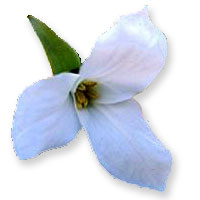
Group 1: Early Spring Bloom
These are the first flowers. The bloom is always before leaf-out, and well before the big bloom of most spring flowers. Here are a few examples to represent this group:Wildflowers:
Hepatica
Marsh Marigold*
Bloodroot
Trees:
Shadbush
Group 2 Mid-Spring Bloom This will be the glorious climax of bloom for any woodland garden. When tulips and daffodils are bloom in your yard, these flowers will be in bloom in your woodland. Here are a few examples to represent this group: Wildflowers:
Trilliums
Violets
The Solomon Seals
Bellwort
Virginia Bluebells
Wild anemones
Canada Mayflower
Trout lilies
Foam Flower
Bishop’s Cap
Dutchman’s Breeches
Wild Ginger
Spring Beauty
Trees:
Dogwood
Redbud
Shrubs:
Azaleas (like Rhododendron canescens)
Rhododendrons
Group 3 Late Spring/Early Summer This group carries your garden into summer, as your woodland leafs out and becomes shady. Here are a few plants to represent this group.
Wildflowers:
Wild Lilies (Canada Lily, etc.)
Wild Iris (Blue Flag, Crested Iris etc.)
Wild Columbine
Meadow Rue
Shrubs:
Azaleas
Rhododendrons
Mountain Laurel
Group 4 Summer/Fall After your woodland canopy is fully leafed-out, there will be fewer wildflowers to add color to your garden. But plan for the few that do make a big difference. They are taller, larger plants, and all-important for summer/fall highlights.
Wildflowers:
Wild blue phlox
Woodland Sunflower
Cardinal Flower
Foxglove
Woodland Goldenrods
Tiger Lilies*
Trees:
Witch Hazel
An Important Ingredient in any Woodland Garden: Patience. Unless you already have a big bloom of woodland wildflowers, shrubs or native flowering trees, your woodland garden is going to take time.
Everyone knows raising flowering shrubs or trees will take several seasons, and the same is true of many of the wildflowers. Some are simpler. Species like marsh marigold, cardinal flower, the violets, and many others will reward you with bloom quickly—often the next spring after you plant them. But others are going to take time.
For example, everyone wants to grow trilliums in their woodland, and why not? They are probably the most spectacular of all the spring wildflowers. But knowing the facts is important. From seed, a white trillium plant takes between six and 10 years to bloom. So the age of the plants you install will determine the time you’ll have to wait for your first flowers. The waiting time will vary species to species; simply keep the plants healthy and be patient.
The important thing is to carefully watch all the plants, and if they are unhappy where you put them, try to change the conditions, or dig them up with plenty of soil, and move them to a better spot. You’ll know when they’re established, and then nature will pretty much take its course as your garden matures.
HOW-TO BOOKS:
You’ll need them. True experts have written about the woodland wildflowers forever, and you’ll find you’ll need at least one or two of the good books as reference as you develop your garden. Also, it’s important to differentiate between Identification Field Guides for Wildflowers and Gardening Guides. Most wildflower enthusiasts find they need both.
The Standard Identification Guides
For identification on hikes and visits to preserves, you’ll want at least one of these. Almost every bookstore or website has them. Be sure the one you buy covers your area.
The Audubon Guides. The official title is The Audubon Society Field Guide to North American Wildflowers. This famous book has an Eastern and Western edition for the US. Both are famous for their great photos, which some think make identification easier than use of drawings that are found in the other guides.
The Peterson Guide. Official name is A Field Guide to Wildflowers by Roger Tory Peterson and McKenny. This classic guide covers most of the US, and lists thousands of species. Like the Audubons, it is arranged by color, and easy to use. However, the flowers are shown in Peterson’s famous drawings, not photos. Some people think this makes identification easier.
Wildflower Gardening Guides
Most of these books are larger and some are expensive. None of them include every wildflower on the continent, but they all deal with growing the most famous and popular woodland plants, along with some meadow wildflowers.
Armitage’s Native Plants for American Gardens. by Allen M. Armitage. This is the newest of the group, published by Timber Press in 2006. Allen Armitage is a great garden writer and a true expert. His information is clear and useful.
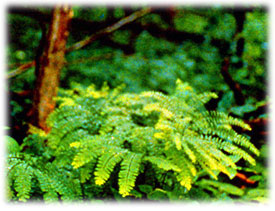
Growing and Propagating Wildflowers on the US and Canada by Wm. Cullina of the New England Wildflower Society. This is a large book published by Houghton Mifflin in 2000, and is often considered the definitive volume on the subject. Great photography and clear, concise information.
Wildflowers in your Garden by Viki Ferreniea, published by Regina Ryan of Random House in 1993. A great book that is unfortunately out of print. Ms. Ferreniea is one of America’s leading plant experts, and her book remains one of the best. Excellent writing, and clear how-to for gardeners.
Growing and Propagating Wildflowers by Harry R. Phillips. This book, published by The University of North Carolina Press in 1985, is often available in paperback and very useful for wild gardeners. It is a result of the great work done with wild flora in North Carolina. Edited by well-known experts there, C. Ritchie Bell and Ken Moore. Highly recommended.
Wildflower Associations and Native Plant Societies. As soon as someone gets interested in woodland plants, the interest almost always leads to a native plant society or other wildflower conservation organization. These groups often include local experts, have plant and seed sales, and introduce you to other wildflower gardeners.
Nearly every state and Canadian province has an active Native Plant Society, and your nearby group or groups would be more than happy to welcome you into membership. Two of the most famous are The New England Wildflower Society, in Massachusetts, and the groups in North Carolina. The California Native Plant Society is very large and has chapters all over the state.
Copyright 2007 Ray Allen - used by permission. August 20, 2007